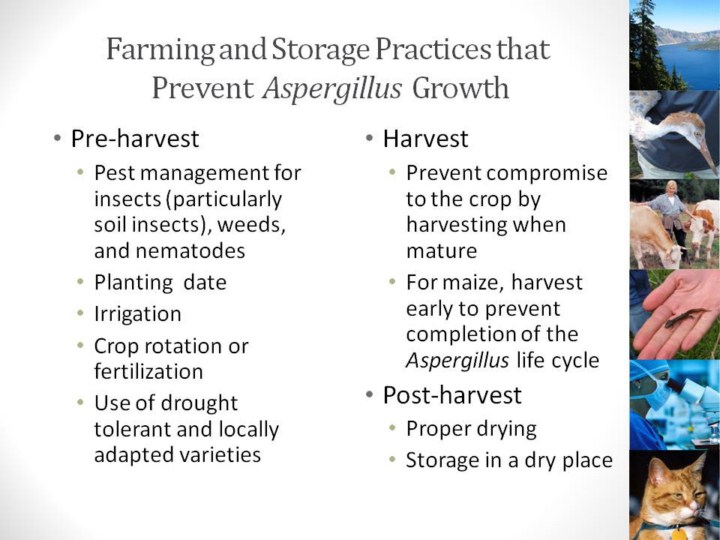| front |1 |2 |3 |4 |5 |6 |7 |8 |9 |10 |11 |12 |13 |14 |15 |16 |17 |18 |19 |20 |21 |22 |23 |24 |25 |26 |27 |28 |29 |30 |31 |review |
 |
Farming and storage practices play an important role in the growth of aflatoxin-producing fungi. As mentioned, environmental conditions such as temperature, humidity and insect damage can affect fungal growth in the field and the level of aflatoxin contamination in the final commodity. Preventive strategies targeting safe pre-harvest, harvest, and post-harvest practices can reduce contamination. Farmers can begin preventive measures by monitoring weather patterns for conditions favoring aflatoxin production. Pre-harvest interventions incorporate planting at the appropriate time and managing pests, including insects (particularly soil insects), weeds, plant disease and nematodes. Testing soil samples for levels of nutrients and alternating fertilizers or rotating crops to improve conditions can help. Irrigation reduces the levels of Aspergillus infection when applied during pollination. 30 Harvesting when the crop is mature helps prevent fungus growth.
Post-harvest prevention strategies include proper drying techniques, followed by appropriate storage which minimizes exposure to excess humidity. 32 Because Aspergillus prefers warm, moist conditions, significant fungal growth and aflatoxin production can occur during storage if crops are not kept properly dry. When harvested corn is ‘clean’ (Aspergillus free), temperatures can be kept at 16 to 17% moisture during the winter storage period. However, when corn is harvested with mold already present, the moisture percentage should be maintained at 15% after immediate drying. It is important to note that for long term storage of corn, it should be dried first to 14%. Moldy corn is not suitable for long-term storage.31
|